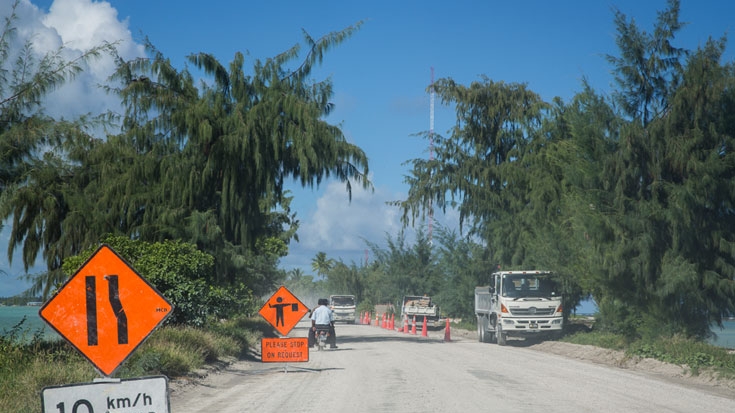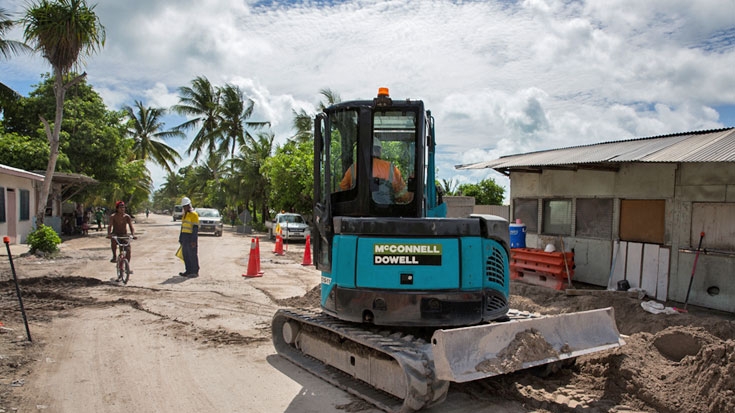South Tarawa, Kiribati, December 2, 2014 – A single road connects the 50,000 plus residents of the villages of Kiribati’s main atoll of Tarawa, forming an essential part of everyday life for half of the small nation’s population.
Extending from bustling downtown Betio in the west to the more laid-back Bonriki in the east, travelling the road provides a snapshot of daily life for i-Kiribati people.
Early risers sweep the sandy terrain outside their homes, children play, and villagers sell freshly caught fish at roadside stalls. Sounds reverberate from schools, churches, and bingo halls. Cars, trucks, motorbikes and beat-up public minivan buses dodge pedestrians, animals and potholes, as people stop to buy fish and produce by the road. From time to time, they call out to family and friends they see along the way.
But life along the Tarawa Road is not all smiles and happy times.
Difficult life on the road
Since it was last improved in the late 1970s, the road has deteriorated and become increasingly difficult to travel on. Dangerous driving, excessive dust and flooding from rain and high tides culminate in serious risks to the lives and well-being of residents. During extreme weather conditions, bus owners refuse to risk the safety of their vehicles, stranding workers and students who take public transport.
South Tarawa is just three meters above sea level on average, making it (and the road) one of the most susceptible places in the world to the effects of climate change.
Teinuea lives with her husband and five children in a house beside the road at Tabiteuea Village, from where she has witnessed many accidents caused by reckless drivers and poor road conditions. After a car crashed into their neighbor’s home, the family relocated to the other side of the road for her children’s safety. Dust and severe flooding caused by poor drainage are part of their daily struggle.
“When it is dry, the dust from the road is extreme and we have to protect our house and family with a dust screen all the time. When it rains, the potholes and the trenches dug by workers fill up with water and everything gets very wet and muddy,” she says.
Fortunately, for residents like Teinuea, conditions are changing.
The Kiribati Road Rehabilitation Project
The Kiribati Road Rehabilitation Project will improve the condition of South Tarawa's main road and help strengthen road safety and future maintenance capacity. Implemented by the Government of Kiribati with financing from the World Bank, Australian Government and the Asian Development Bank, the project includes a significant road safety education campaign.
More than 127 residents, along with government staff, are working on road construction while also developing the expertise necessary to maintain the road in years to come.
Civil works started in 2013 and, upon completion, will have improved 26.1 kilometers (16.2 miles) of paved roads; paved 12.7 kilometers (7.9 miles) of roads; added 67 kilometers (41.6 miles) of footpaths and 56 speed humps; and repaired other roads and bridges including the sealing of much-neglected feeder roads in areas like Buota. Bus stops and solar powered street lights will also provide a safer environment for residents.
“The impact of the new road on the people of Tarawa will be enormous,” explained Kiribati Government Secretary to Cabinet Teea Tira.
“Linkages between villages will improve, reducing the travel time and freeing up time for other more productive outputs. A new road will also lead to a cleaner environment, with people not having to contend with puddles, mud, and dust. It will give the island a much needed face-lift which should lead to other improvements,” she said.


